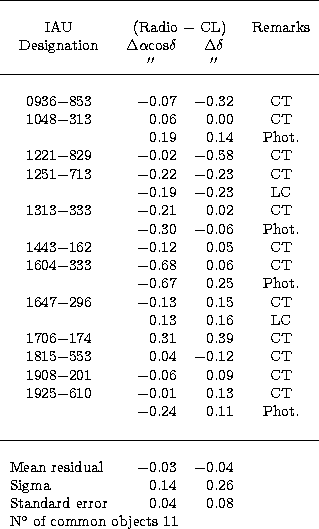
CT and LC stand for Cerro Tolo and Las Campanas
|
0936-853: No optical identification was
available for this object.
Figure 1 shows the optical
counterpart we propose. In wide-field photographic
plates, this object has an elongated image due to a very close
star.

CT and LC stand for Cerro Tolo and Las Campanas
|
Copyright The European Southern Observatory (ESO)